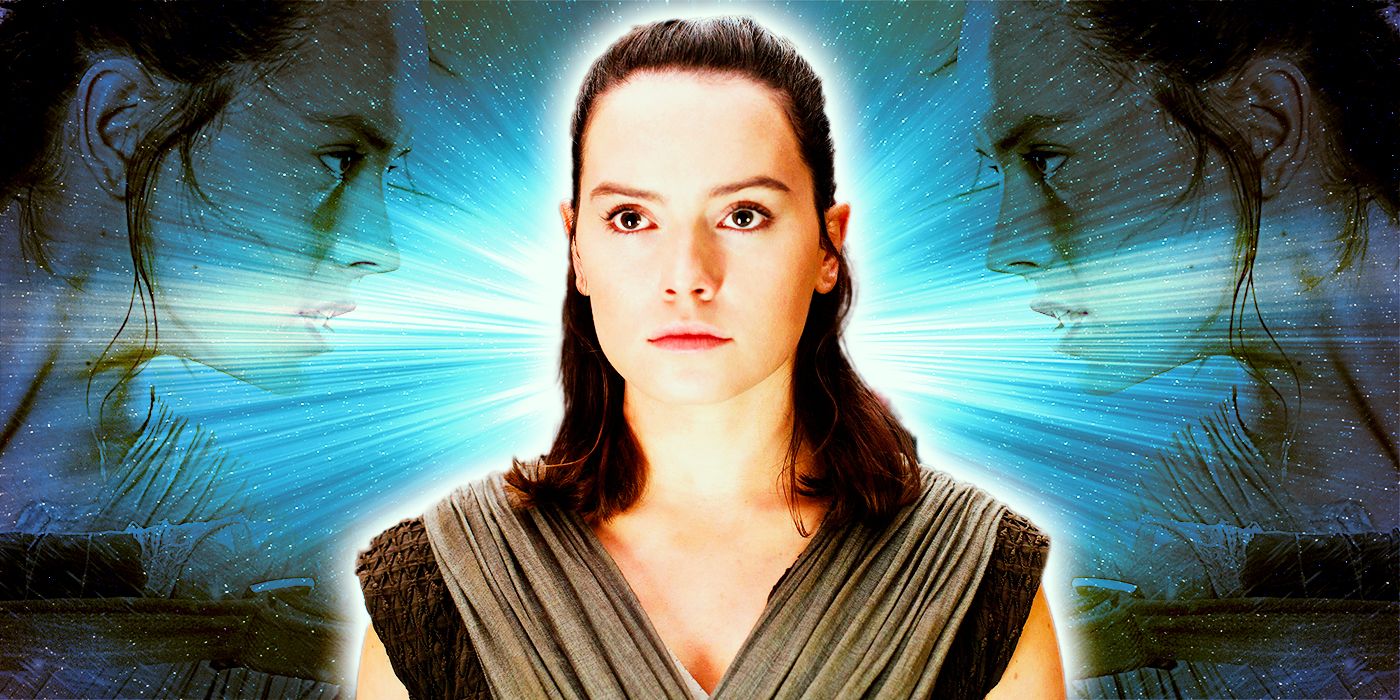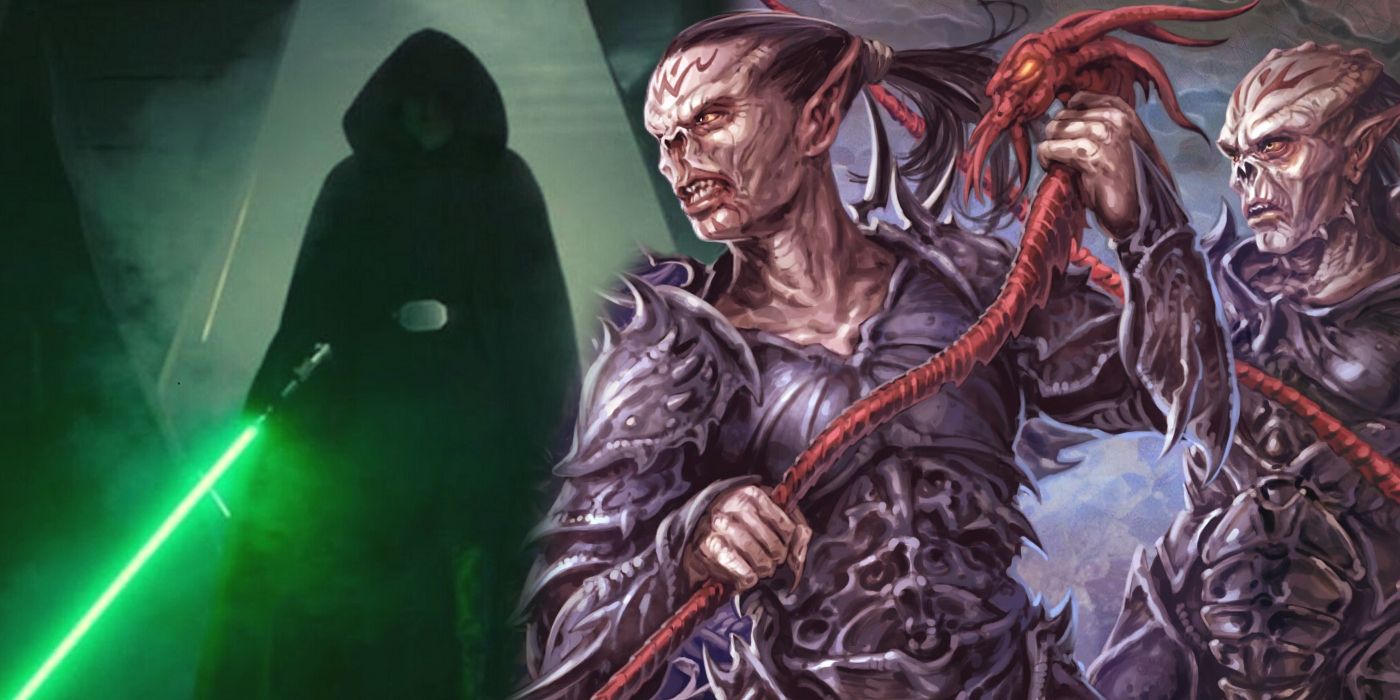Quick Links
Summary
- Anakin Skywalker's murder of the younglings was fueled by his grief, self-loathing, and desire to save Padmé.
- Converting the younglings to the Dark Side was not an option because their loyalty to the Empire could not be guaranteed.
- Even after Anakin Skywalker returned to the Light Side, his actions as Darth Vader such as the Younglings massacre still haunted him even as a Force ghost.
Anakin Skywalker completed his journey to the Dark Side in Star Wars: Revenge of the Sith with the slaughter of the younglings at the Jedi Temple on Coruscant. Many have questioned why he killed innocent children, especially when they posed no immediate threat to the Empire and could be converted to the Dark Side. While the easiest answer claims that Anakin was simply following Emperor Palpatine's orders, a number of fan theories have expanded upon the fallen Jedi's willingness to commit this atrocity.
While corrupting Anakin Skywalker to the Dark Side, Palpatine states in Revenge of the Sith that "Every single Jedi, including your friend Obi-Wan Kenobi, is now an enemy of the Republic," before adding, "Do not hesitate. Show no mercy. Only then will you be strong enough with the Dark Side to save Padmé." Although younglings were only in the initial steps of their Jedi training, they were, nevertheless, members of the Order, making them de facto enemies of the Republic. This directive also displays Palpatine's decade-long manipulation of Anakin, as it implies that killing the younglings will make his new apprentice strong enough to save Padmé.
Updated by Jordan Iacobucci on May 13, 2024: Anakin Skywalker has returned to the Star Wars franchise, with Hayden Christensen reprising his iconic role in Disney+ series like Ahsoka and Obi-Wan Kenobi. Even with new content featuring the character, audiences remain fixated on one of his most infamous and horrific actions in Revenge of the Sith: the murder of the younglings in the Jedi Temple. Why did Anakin commit such a heinous atrocity, and what purpose did it serve for Palpatine's schemes?
The Younglings Reminded Anakin of How Different He Was
Anakin Was Brought To The Jedi Temple When He Was Nine Years Old

Star Wars: Daisy Ridley Reveals What Convinced Her to Return as Rey Skywalker
Daisy Ridley explains how the "new direction" taken with her upcoming Star Wars film helped convince her to return as Rey.
|
Key Moments in Anakin Skywalker's Fall: |
|---|
|
Although Anakin was a star pupil of the Jedi Order, he also had a tenuous relationship with the Jedi High Council before the events of Revenge of the Sith. Unlike the other Jedi younglings, who were brought to the Order as infants, Anakin joined at age 9. That was a divisive break with tradition, leaving the young Skywalker to feel ostracized by the Jedi. The younglings served as a reminder that he never really fit in, which likely influenced his decision to kill them. He didn't have a personal connection with any of them, and his lack of commiserate experiences made it easier to view them as obstacles instead of children. Combined with his desire to save Padmé no matter what — and his own ambitious need to exercise power as he thought best — it became much easier to do something unthinkable.
The seeds of Anakin's murderous act stem from Shakespearean tragedy, particularly Macbeth: another good man turned evil by the poison of his ambition. Early in the play, he struggles with the reality of having to kill the king in order to take his place. He decides to do it, driven by his deep-set ambition to wield power and thinking that — once the deed is done — he can forget about it and be a good ruler going forward. But that path necessitates performing similar deeds over and over again, and Macbeth finds that it gets easier each time. By the end of the play, he's a blood-soaked monster.
So it is with Anakin. Revenge of the Sith makes it clear that Anakin was willing to do anything to prevent Padmé's death because he was already corrupted by Palpatine's claims to the secret to immortality. And he's already murdered Mace Windu at Palpatine's behest, more or less by stabbing the Jedi in the back. The canonical comic Star Wars: Darth Vader #7 confirms the younglings' deaths caused Anakin grief, self-loathing, hatred, and pain, fueling his descent even further into the Dark Side. Those negative emotions also power the Dark Side, meaning Anakin likely felt stronger as he killed the younglings. That, in turn, reinforced his belief that only the Dark Side could save Padmé. And like Macbeth, Anakin's path gets easier as a result, allowing him to commit all manner of horrible acts as Darth Vader without considering the cost. He's even willing to murder Padmé herself before it's all said and done.
Why Did Anakin Murder the Younglings?
The Murder Of The Younglings Cemented Anakin Skywalker's Fall To The Dark Side

Star Wars: Who Are the Yuuzhan Vong, Explained
Learn everything you need to know about the Yuuzhan Vong in Star Wars Legends, including their origin, homeworld, and how they can fit into canon.
|
Notable Jedi Killed By Anakin Skywalker/Darth Vader: |
|---|
|
Converting the younglings was also out of the question. There were numerous younglings within the temple, and it would have been difficult to convert all of them, even if children were more susceptible to the Dark Side. Some of the younglings managed to escape the temple slaughter — among them, Grogu and the future Inquisitor Reva. However, any Force-sensitive person within the galaxy posed a serious threat to the Empire. Even if all the children could be converted, their loyalty to the Empire was not guaranteed. The Clone Wars and Attack of the Clones made it clear that Count Dooku was willing to betray Palpatine, while Darth Vader loathed the Emperor following Revenge of the Sith. Ultimately, any potential future enemies of the Empire had to be eliminated--even if they were still innocent children.
Furthermore, Order 66 was already underway by the time Anakin stormed the Jedi Temple, meaning the Clone Troopers would have killed the younglings themselves. Perhaps Anakin saw himself as more merciful than the Clone Troopers, whose actions he couldn't account for. By taking the younglings' lives himself, he spared them the possibility of a more gruesome demise. Even so, Anakin's misguided ideas about helping the younglings aren't nearly enough to absolve him of this crime. It was at this moment that there was no turning back for Anakin Skywalker — at least not until several decades later. By killing the younglings, Anakin ultimately proved that he would follow any order given to him by Emperor Palpatine, no matter how horrific the action may be. Anakin Skywalker was truly dead — and Darth Vader had arisen to take his place.
Does Anakin's Redemption Really Fix His Worst Crime?
Darth Vader Supposedly Redeems Himself By Killing Emperor Palpatine

Star Wars May Have Given Anakin Skywalker a New Apprentice - And It Would Fix His Story
The Ahsoka finale seems to tease that Anakin Skywalker will have a new protégé who could adequately bookend his Darth Vader redemption.
|
Timeline of Anakin Skywalker's Life |
||
|---|---|---|
|
41 BBY |
Born to Shmi Skywalker; Raised on Tatooine |
Childhood |
|
32 BBY |
Brought to the Jedi Temple by Qui-Gon Jinn |
Jedi Knight |
|
32-22 BBY |
Trains under Obi-Wan Kenobi |
|
|
22 BBY |
Marries Padme Amidala/The Clone Wars | |




